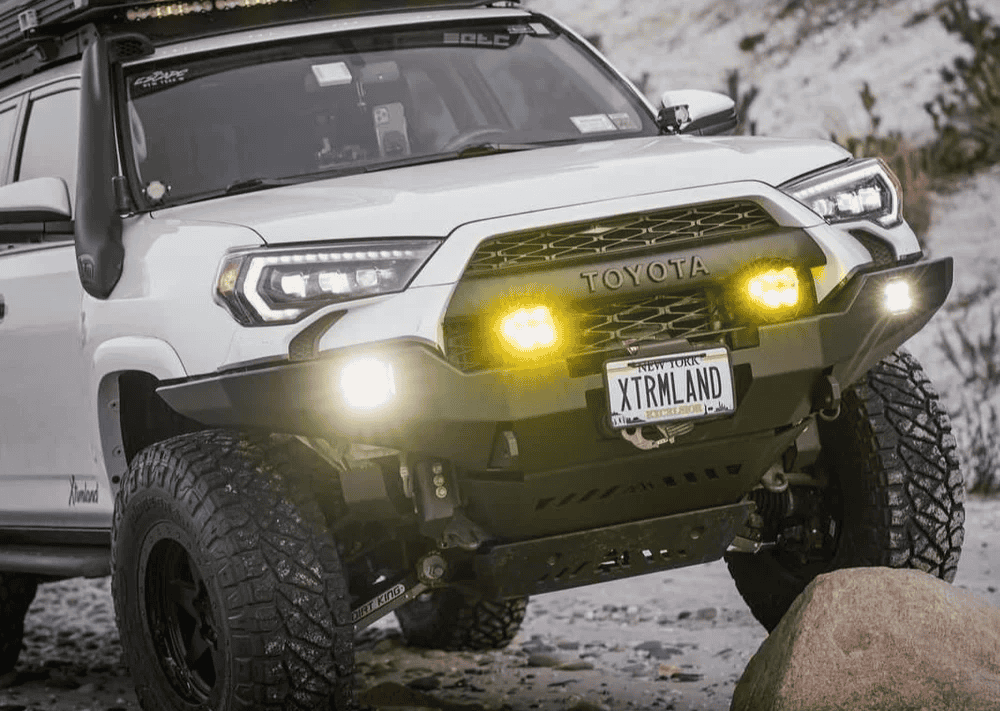Overland Vehicles

An off road research vehicle is a mobile field lab that blends expedition capability with scientific rigor. It must reach remote sites, operate for days without shore power, and safeguard sensitive equipment against shock, dust, vibration, and temperature swings. The core challenge is balance. Off pavement mobility demands ground clearance, traction, and robust suspension, while research work demands quiet power, stable benches, organized storage, and clean data environments.
Mission profiles drive design. Wildlife tracking requires low noise, thermal discipline, and long idle windows. Geology teams prioritize payload, dust control, and secure sample handling. Hydrology surveys need water storage, pumps, and decontamination workflows. Environmental monitoring may run stationary for weeks with autonomous power and telemetry.
A sound platform starts with rated payload and wheelbase suited to the work. Tires are chosen for terrain and load, not just looks. Skid plates, recovery points, and winches support safety margins. Inside, equipment is isolated from heat and vibration, cable routes are protected, and every device has a labeled power budget. The result is a vehicle that earns trust over repeated field cycles.
A research build is a systems problem. Each subsystem must perform alone and as part of the whole.
Chassis choice sets your envelope. Body on frame trucks tolerate heavy loads and rough tracks, while long wheelbase vans offer volume and weather tight space for bench work. Suspension tuning matters more than raw lift. Progressive springs, matched dampers, and correct alignment carry weight without harshness. All terrain tires with reinforced sidewalls reduce punctures and stabilize handling. Underbody armor protects fuel tanks, batteries, and driveline. A full size spare and patch kit are non negotiable.
Power is the heartbeat. Lithium iron phosphate batteries deliver stable voltage, deep cycles, and lower weight. Size the bank from measured loads, not guesses. Redundancy can pair alternator based charging through a DC to DC charger with solar and shore inputs. Inverters should be pure sine to protect lab instruments. Use dedicated circuits for radios, sensors, and computing. EMI management starts with short cable runs, ferrites, and proper grounding. Environmental sensors and data loggers need shock isolation mounts and temperature control. Back up your data on site, daily.
Your comms suite should match the mission. VHF and UHF radios coordinate local teams. Cellular boosters extend coverage near networks. For true remoteness, satellite messaging and data links keep updates flowing. Navigation stacks pair high precision GNSS with inertial sensors for mapping and repeatable transects. Forward lighting plans mix spot and flood with selective amber for dust and red for night discipline. Roof structures carry LIDAR, weather masts, or camera arrays with safe cable routing and quick detach service points.
Research missions live or die on risk control. Recovery gear is more than a winch. Include soft shackles, rated straps, traction boards, and a jack that works under load in soft ground. Train the team on safe use, then pack tools for the jobs most likely to occur: electrical faults, tire damage, and loose fasteners. Label spares and keep a minimal torque and calibration log for critical mounts.
Environmental control preserves both people and data. Insulation reduces heat soak and cold stress. Ventilation with filtered intakes keeps dust out and air moving during long instrument runs. For temperature sensitive work, add compact climate zones around equipment bays rather than cooling the entire cabin. Interior design prioritizes ergonomics. Low reach storage, tie down rails, and cushioned bench edges reduce fatigue and protect kit. Wet work requires sealed floors and washable surfaces, with clear separation from clean areas.
Compliance and documentation are often overlooked. Build secure storage for chemicals, samples, and regulated devices. Keep MSDS sheets and permit copies in a waterproof binder. Label every circuit and fuse with its load and draw. Document pre trip checklists, power budgets, and maintenance intervals. After action notes improve the platform each deployment.
When a platform must double as transit and lab, modularity helps. Use quick release mounts for sensor swaps, coded connectors for power and data, and standardized plates for future equipment. Keep heavy masses low and centered. Protect the roof. It is tempting real estate, but too much weight up high raises center of gravity and stresses racks.
If your team needs an off road research vehicle built around these principles, consider a purpose built overland platform that marries mobility, power, and lab grade organization. Field teams benefit from integrated racks, silent battery systems, clean cable routing, and recovery equipment that is both rated and reachable. See how expedition grade layouts translate to science operations on explore overland rigs. For mission specific interiors, power systems, comms mounts, and sensor integration, review custom overland upfits. If you are comparing builders, learn how process and testing impact outcomes on why choose OZK Customs.
Translate your research spec into a dependable platform with a builder that designs for payload, range, and data integrity. OZK Customs focuses on off grid power, secure equipment mounting, and serviceable interiors that survive real dust, heat, and vibration. Bring your mission profile and duty cycle. We will map the system, select the right platform, and build a field lab that hits your schedule and your science goals.
Ready to turn a research spec into a reliable field platform? Share your mission requirements and timeline. OZK Customs designs and builds purpose built overland rigs that protect people, power sensitive instruments, and deliver repeatable results in harsh terrain.
ADDRESS:
6159 E Huntsville Rd, Fayetteville, AR 72701
PHONE:
(479) 326-9200
EMAIL:
info@ozkvans.com